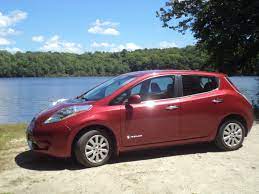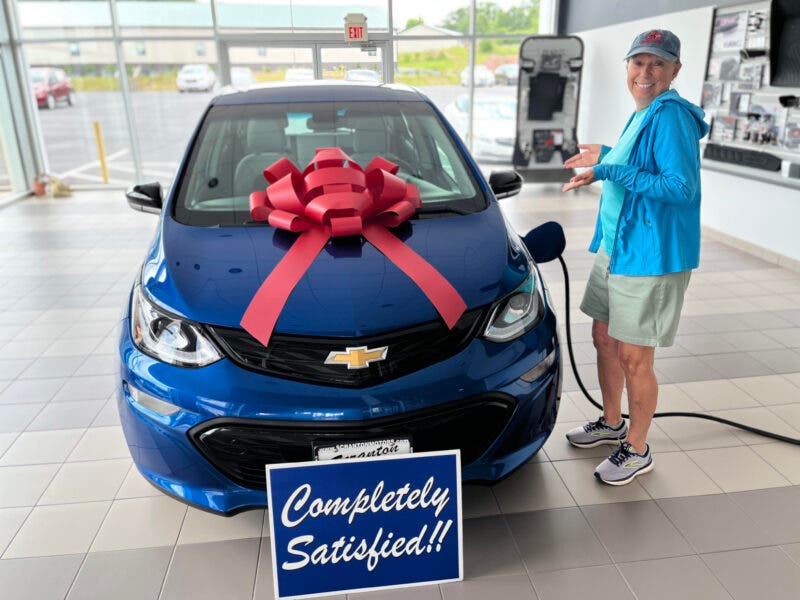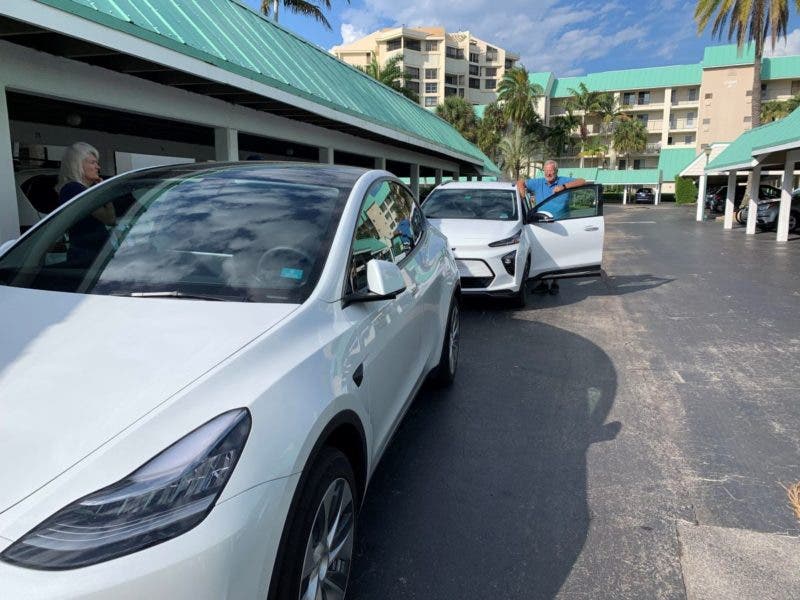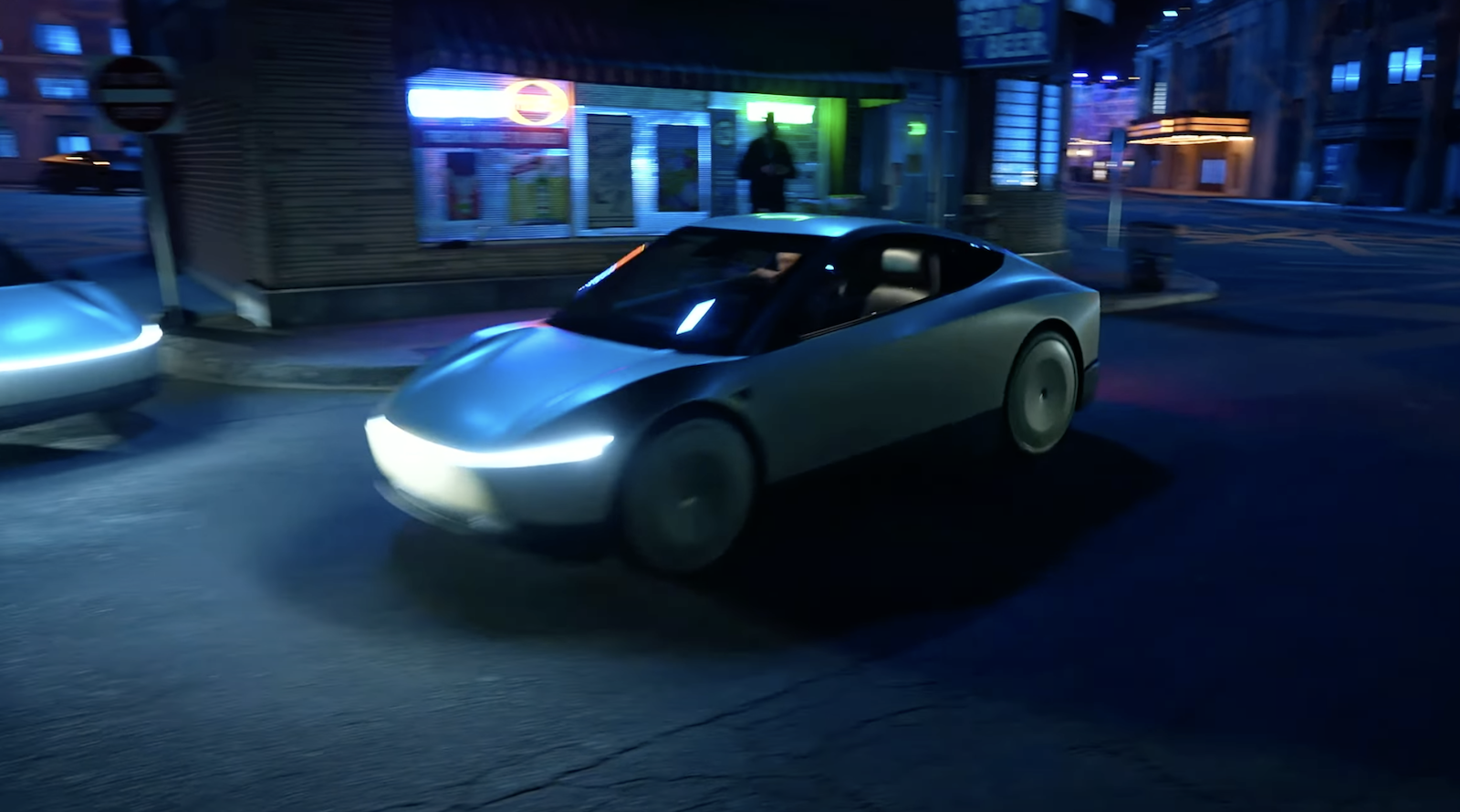
I’m one of those retirement-age folks who took up pickleball as part of my second childhood. Within two years I had wrenched my knee, and now I’m immersed in at least a couple of years of recuperation due to surgery and subsequent complications.
Driving my co-owned Tesla Model Y during this time period in FL hasn’t been a problem — the height makes it satisfactory to enter, and I mostly feather the pedal and let regenerative braking slow the vehicle. But, when I traveled north to my rural summer vacation home and took a spin in my other car, a 2013 Honda Si, my knee immediately started screaming.
It was going to be a long summer where driving was concerned.
I had serious decisions to make. Would I keep the Si — with its delightful 6-speed and my agony when crouching down to get into the vehicle and then braking and shifting — or would I trade it in for a used electric vehicle of some sort? I’ve gone fully electric in my permanent Florida lifestyle and have been having qualms about continuing to drive an internal combustion engine (ICE) vehicle in the north.
But because my summer jaunt to the cabin (in the woods, on a brook, adjacent to a state forest) lasts at most about 12 weeks, it wouldn’t make sense to invest too much in another vehicle.
What were my options?
Weighing the Pros & Cons
I decided it would be foolish to continue to drive in pain, so it was time to trade in the Si. That meant I could choose a used EV, among several options. I ruled out a Hyundai EV or Kia EV fairly immediately, as they exceeded my price ceiling, which also likely meant no federal used EV tax credit.

Photograph by Carolyn Fortuna/ CleanTechnica
Nissan Leaf: There continue to be lots of low priced/ low mileage used Leafs available. While the Leaf’s price and mileage were appealing qualities, a used Leaf’s range tops out at about 80 miles. I’ve owned a Leaf before and loved it as a primer into the EV world, but I used it exclusively for short commutes. I’d be spending a lot of time during the upcoming summer stuck at public chargers if I went with a Leaf, as I’ve got several longer road trips planned.
BMW i3: I knew this was a nice vehicle from experiencing it firsthand on the Global EV Road Trip to the Middle East. I also remembered how our entire caravan of EVs had to wait a number of times so the i3 could recharge because of its low battery range of around 75 miles. Owning an i3 would mean I’d have a sharp vehicle in the year, yet it would have too many commonalities with the Leaf to make it a viable choice.
Chevy Volt: The plug-in hybrid Volt had a lot of appeal due to its dual engines. I could get about 50 miles on a full charge. The ICE would pick up the slack between charging sessions. Having 2 motors would possibly add eventual repair costs over the life of the vehicle, though. Inventory for a low mileage Volt was also low, so I’d have to choose a higher mileage Volt or invest in a newer model year. I wasn’t sure the cost/ benefit ratio would be worth it.
Chevy Bolt: The Bolt had a lot going for it. It would be fully electric, so my fossil fuel guilt would vanish. With a back hatch, it offered the feel of a mini-SUV for luggage and gifts for the family. It offered nearly 200 miles of range on an 80% charge. I had driven a Bolt on the Global EV Road trip and found it responsive. I also have friends that own one and drive it back and forth from Indiana to Florida. The regenerative braking and accessories in the LT option wouldn’t come close to matching the Model Y, and the price would be a little higher than I wanted to spend. Anyway, there weren’t too many Bolts to choose from online.
What Used EV Did I Choose?
Sticking with the Si, as much as I had loved driving this car on my hour-long commute during my secondary education career, wasn’t physically possible any longer — I felt like I had a cannonball in my knee when I drove it. While I had really liked the Leaf when I had once owned one, I take too many long road trips when I’m in New England, and I wanted to spend my vacation time with family and friends dispersed across several states, not constantly at a roadside charger. That same rationale eliminated the i3 — plus there weren’t many available online.
That left the 2 Chevy EVs — the Volt and the Bolt. I initially leaned toward the Volt, thinking that, while most day trips would fit its limited range, Marblehead (MA), Chatham (MA), Waitsfield (VT), Bedford (MA), and Newport (RI) were all planned destinations, so the gas engine would kick in. It also seemed that every Volt I located online required additional shipping costs, as few were available in the general CT vicinity. Those that were available came with high mileage — and that meant other owners’ deferred maintenance.
The Bolt had the preferred range, albeit with a slightly higher price tag. Many online postings were frustrating with their “purchase in progress” tag, and I was starting to feel that I wouldn’t find a Bolt that would meet all my desired criteria. I realized, even if I located one that fit the bill, I would need to get written reassurance that the problem battery would have been replaced and that the previous owner had not already taken advantage of the $4000 federal used EV credit.
I started getting discouraged.
As Alexander Pope mused poetically, “Hope springs eternal.” I kept typing in different search prompts, with tenacity trumping ennui.
Voila! I found a 2017 Bolt at Scranton Motors in Rockville, CT — about 15 miles from my summer digs. As I took the Bolt for a ride, I learned that the dealership has had nearly 20 Bolts on their lot this year, all post-battery replacements, as part of a push from corporate GM. I test drove a cranberry LT with 17,000 miles, but it only offered a Level 1 charger. Surveying the 6 other available ones on the lot, I chose a 2017 blue Bolt with 26,000 miles. A perk was the Level 3 charger, which could come in handy on the anticipated longer road trips.
I did a bit of negotiating (I was a bit out of practice since buying the Tesla for the FL home) and ended up trading in the Si as part of the transaction.
With only a fraction of the year devoted to driving this vehicle in the family, I felt I had found the right balance of age, range, price, color, and accessories. Sometimes it takes a bit of stubbornness combined with resilience to find what you want and need in life.

Photo by Carolyn Fortuna/ CleanTechnica
Sign up for daily news updates from CleanTechnica on email. Or follow us on Google News!
Have a tip for CleanTechnica, want to advertise, or want to suggest a guest for our CleanTech Talk podcast? Contact us here.
Former Tesla Battery Expert Leading Lyten Into New Lithium-Sulfur Battery Era — Podcast:
I don’t like paywalls. You don’t like paywalls. Who likes paywalls? Here at CleanTechnica, we implemented a limited paywall for a while, but it always felt wrong — and it was always tough to decide what we should put behind there. In theory, your most exclusive and best content goes behind a paywall. But then fewer people read it! We just don’t like paywalls, and so we’ve decided to ditch ours. Unfortunately, the media business is still a tough, cut-throat business with tiny margins. It’s a never-ending Olympic challenge to stay above water or even perhaps — gasp — grow. So …







